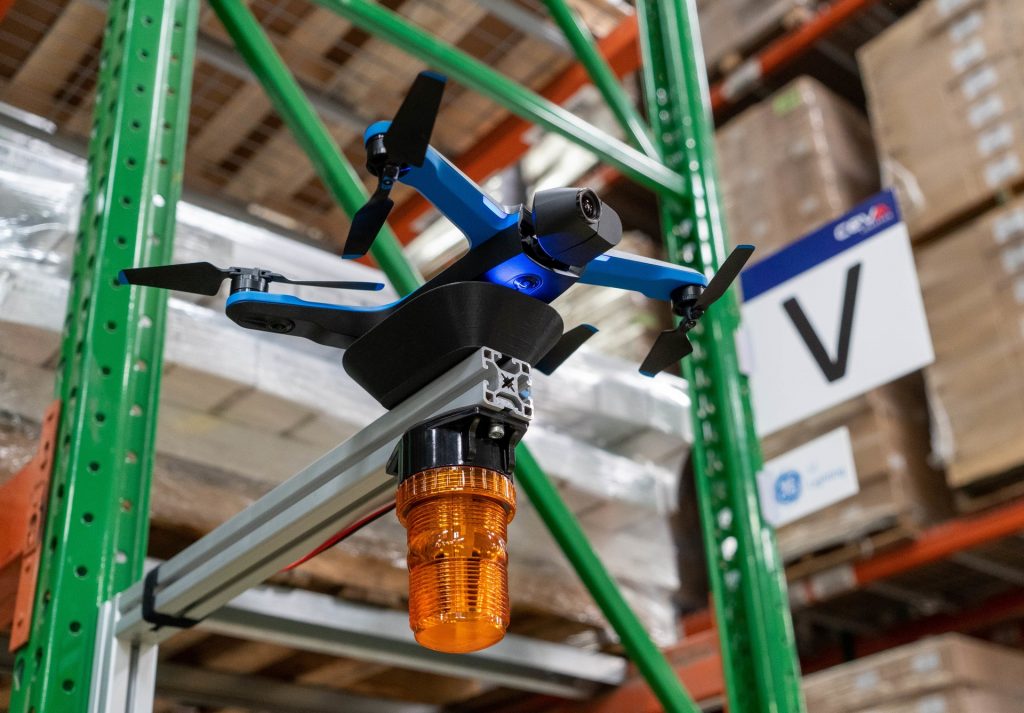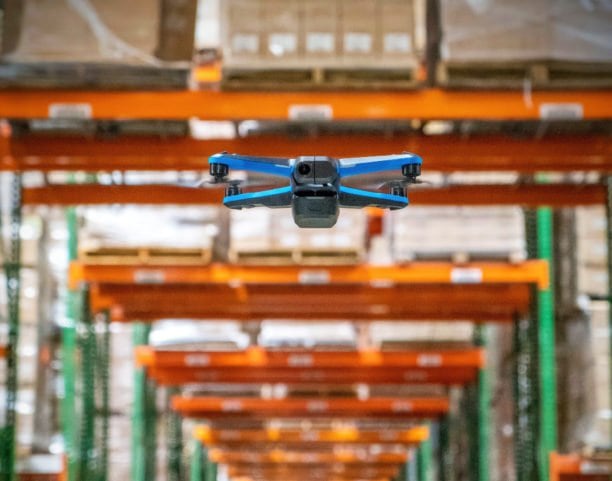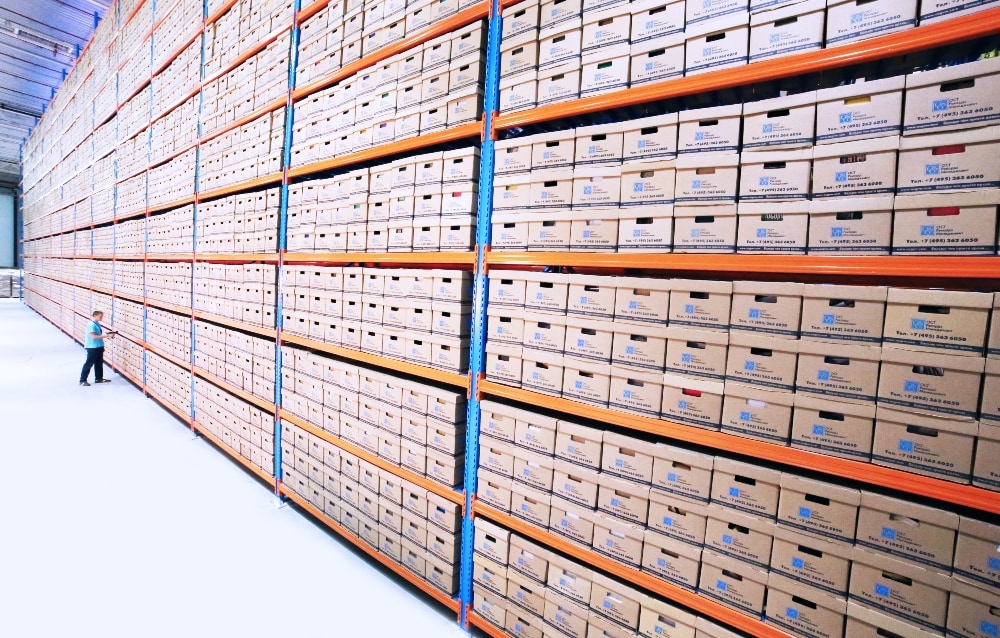Autonomous Drones Are Revolutionizing Warehouse Logistics—Here’s How They’re Doing It
BY Zacc Dukowitz
2 September 2021Right now, automated drones are quietly revolutionizing the ways goods are inventoried and tracked within warehouses.

Photo credit: Ware
Though we may not give these operations much thought, most of us are regular customers of warehouse operations because of all the online shopping we do.
The need for efficient warehouse logistics to support online orders has only grown over the last year, as the world stayed home and ordered more and more of their daily goods instead of taking the risk of going to the store to buy them.
It turns out that drones can do a lot of the more tedious—not to mention dangerous—work that people currently do in warehouses.
And not only can they do this work without endangering people. They’re better at it, too.
4 Ways Drones Are Being Used in Warehouse Operations
Whenever you order something from Amazon, or Chewy, or any other online store, people have to walk the floor in gigantic warehouses—or fulfillment centers, as they’re often called now—to find the item, then make sure it gets shipped to you in a timely manner.
And these warehouses are massive.
Amazon owns several warehouses that contain more than three million square feet, and is building one right now in Denver that will total a whopping four million square feet once it’s completed.
We already know that drones have a potential role to play in the second half of the order fulfillment process.
Companies like Walmart, Amazon, and UPS have all made big plays in the drone delivery space, fighting to make sure they’re staying competitive when it comes to the next big thing in delivery automation.
But drones can also benefit the first half of this process—warehouse logistics.
Here are the four main ways drones can be used to support warehouse operations:
1. Inventory Management
The primary benefit to using drones for work in warehouses is in helping keep track of inventory—that is, in knowing what is where at any given moment.
Instead of having people go around a warehouse counting items and scanning barcodes, drones can do this work automatically, presenting a faster, more efficient way to keep track of inventory.
Why is it safer?
Because items in these warehouses may be stored at significant heights, making them potentially dangerous for people to reach—but not so for a drone.

Photo credit: Ware
2. Inspections
Just like any area that is in constant use, warehouses are prone to wear and tear.
To avoid accidents from damaged equipment, and to help extend the life of the assets used in warehouse logistics, periodic inspections are required.
Traditionally, these inspections would be done in person, with an inspector manually walking through an entire warehouse examining racks, walls, ceilings, roofs, and other key equipment and assets, looking for potential defects.
Drones can potentially automate the visual data collection needed for these inspections. By flying through a warehouse capturing visual data, drones can collect all the information that inspectors need, so they can then review it later.
This approach to inspections is not only faster and cheaper—it’s also safer, since it removes the need for inspectors to climb ladders or enter confined spaces to manually review the conditions there.
At some point, drones might even be able to automate an entire inspection by not only collecting visual data but also processing the data they collect, using AI-enabled software to identify potential defects that might require further attention.
3. Security and Surveillance
As we’ve already mentioned, warehouses are huge, sprawling spaces full of goods—and therefore also full of opportunities for theft.
Instead of having security guards walking through areas where goods are stored, a drone can fly through it and its live feed can be observed by guards from a single location.
Alternatively, the video footage the drone collects can be processed using AI-enabled software to identify unusual activity, and spot suspicious behavior.
4. Indoor Intralogistics
Intralogistics is a catchall phrase that refers to the transportation of goods and parts within a warehouse or between a warehouse and an adjacent workshop or factory that works in coordination with a warehouse.
Some examples of things that regularly need to be delivered between these locations are spare parts, lubricants, and tools.
Automated drones have the potential to follow pre-established flight paths, carrying these kinds of items between different stakeholders in a warehouse operation to cut down on the time and energy it takes for a person to make the same delivery.
One upside to using drones for intralogistics is that, if the operation is fully indoors, it doesn’t require any FAA approvals—including adherence to Part 107 rules.
But the downside is that the technology to support this kind of work is still pretty limited.
When it comes to what a drone can carry, precise navigation (i.e., getting the drone from one specific indoor location to another specific indoor location), and how the drone actually makes the delivery, a lot of work still needs to be done before drones can really support intralogistics needs at scale.
The Drone Companies Making Warehouse Drones
Wondering who is actually doing work with drones in warehouse logistics?
Here are three of the top companies working with drones to support warehouse operations. One thing you’ll notice is that two of these three companies are currently focused only on the first use case listed above—inventory management.
Flytbase
Flytbase is a drone agnostic software company that makes solutions to help other companies automate and scale drone operations. Flytbase’s software isn’t just limited to warehouse operations—it also works in several other areas, including drone delivery, inspections, and security and surveillance.
Watch this video to see how IAG Cargo is using Flytbase’s software for its logistics needs:
Verity
Verity started at ETH Zurich, a public research university based in Switzerland.
The company makes drone solutions to help create what it calls a “zero-error warehouse”—that is, a warehouse where nothing goes missing, and everything is consistently tracked from one day to the next.
Working in the background with no human interaction, our system reduces the time and cost of collecting accurate inventory data—and distills that data into critical insights to drive better inventory management decisions.
– The Verity website
According to Verity, its autonomous indoor drones have already completed over 300,000 flights and are in use in over 20 countries.


Watch this video on YouTube
Ware
Ware‘s drones operations are conducted autonomously inside warehouses and distribution centers to keep track of stocks.
Ware uses Skydio 2 drones to conduct its automated inventory work, giving its clients more accurate, cheaper, and more efficient inventory tracking, according to the company’s website.


Watch this video on YouTube




